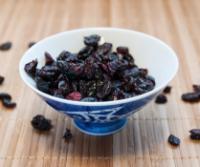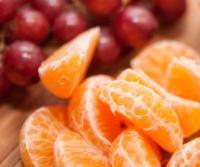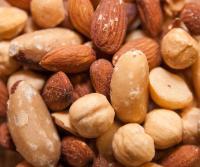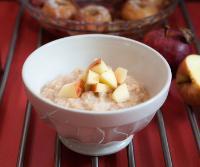How to cut down on sugar
Action on Sugar's Registered Nutritionist Kawther Hashem provides some tips on eating less sugar:

- Remove sugar (white and brown), syrup, honey and molasses from the breakfast table — out of sight, out of mind!
- Cut back on the amount of sugar added to things you eat or drink regularly like cereal, pancakes, coffee or tea. Try cutting the usual amount of sugar you add by half and wean down from there.
- Instead of adding sugar to cereal or oatmeal, add fresh fruit (try bananas, cherries or strawberries) or dried fruit (raisins, cranberries or apricots).
- Instead of having sweetened yoghurt, have plain yoghurt and add fresh fruit or dried fruit
- When baking cookies, brownies or cakes, cut the sugar in your recipe by one-third to one-half. Often you won’t notice the difference.
- Instead of adding sugar in recipes, use extracts such as almond, vanilla, orange or lemon.
- Enhance foods with spices instead of sugar; try ginger, allspice, cinnamon or nutmeg.
- Buy sugar-free or low-calorie drinks.
- Compare the sugar content of different foods and choose the lower sugar and calorie option.
- Sauces and condiments such as ketchup, HP sauce, pickles and mayonnaise can be as much as 30 per cent sugar, while sweet chilli sauce can be up to a whopping 70 per cent sugar. Try to cut down by using low-sugar or sugar-free alternatives such as a tomato-based pasta sauce instead of ketchup, pesto, harissa or plain mustard instead of pickles, or houmous instead of mayonnaise.
- Salad dressing can be another source of hidden sugar. Try the classic combination of a good virgin olive oil and balsamic vinegar (this often contains sugar too, so check the label), or olive oil and a squeeze of lemon. Sprinkle on some dried or fresh herbs for added flavour.
- Use FoodSwitch UK an award-winning free smartphone app, to help you find food and drink products with less sugar.

Eating out
- Sugar isn’t just hidden in products you buy at the supermarket, many restaurant and take-away meals often also contain a lot of hidden sugars.
- Words such as “glaze” or “sweet pickles” on a menu usually indicate the dish contains a big dose of sugar, even though they are part of a savoury meal. Ask for a sugar-free alternative on the menu, or for any sauces to be served on the side.
- Although the traditional versions are healthy, most Asian take-away foods have been significantly sweetened up for British palates. Thai, Chinese, Japanese teriyaki and even your favourite Indian curries such as butter chicken are almost guaranteed to contain added sugar. When ordering, ask your waiter if it is possible to prepare the dish without sugar. It will be just as tasty!
- Instead of eating a whole desert, try splitting it with someone. Alternatively, choose fruit instead.
Snacks
When you’re in the early stages of cutting down on sugar, you’ll probably notice that it is seemingly everywhere! Every cafe, take-away or snack food aisle is packed with products containing sugar. None of this is helpful if you find yourself ravenous while commuting home or out and about, or when a colleague brings out biscuits or cake in the office. Here’s where a bit of planning makes it much easier to stick to your goals:
- Keep non-sugar alternatives handy in your handbag, briefcase, in the car or the kids’ lunch boxes, to have up your sleeve for when a craving strikes. These light and small snacks can be packed in a snap-lock bag or reusable container and most can be made at the start of the week, ready to go:
- Plain nuts and dried fruit – nuts such as cashews or almonds are naturally sweet as well as being nutritious, and a few sultanas can hit the spot when you’re really craving sweets.
- Toasted almonds - freshly toasting nuts gives them a burst of extra flavour. Make your own at home by simply placing raw almonds on a flat baking tray and dry toasting on a medium-low oven for 10-15 minutes. You can also toast walnuts, pecans, cashews or sunflower seeds in this way.
- Oatcakes with cheese - oatcakes are filling, tasty and usually sugar-free (but do check the label), and are wrapped in small packets of three or four within the box, making them an ideal emergency snack to carry around. You can make little mini oatcake ‘sandwiches’ with sliced low salt cheese, or even sugar-free jam.
- Plain houmous with celery/carrot sticks - quick, cheap and nutritious, houmous is a tasty snack that’s fun to eat. Make your own at home by blending tinned chick peas, tahini sesame paste, lemon juice and a little cumin powder and olive oil. If you’re in a hurry, supermarket versions are good too, just check the label for added sugars and choose the low sugar and salt option.
- Corn cakes - These are a cross between puffed rice cakes and popcorn and easy to carry around and eat on the go.
- Fresh fruit
- Dark chocolate
Breakfast

As well as steering towards plain, low-sugar cereals and fresh fruit without the honey, open your tastebuds to enjoying other types of breakfast. Here are some suggestions:
- Savoury porridge - while many of us are used to having porridge topped with honey and fruit, in some parts of the UK such as Scotland, traditional porridge is more on the savoury side – made with jumbo rolled oats and water. Top with toasted coconut flakes, toasted chopped nuts, and, if you do fancy it, a few sultanas or raisins.
- Mushrooms on toast - sauté mushrooms with a little unsalted butter, olive oil and a pinch of dried herbs such as thyme. Try adding a squeeze of fresh lemon at the end instead of adding salt. Serve on top of unsalted buttered toast.
- Kippers on toast - smokey and savoury, this old-fashioned British breakfast is rich in healthy oils and protein to keep you going through to lunch. Many people love kippers but not the smell it leaves after cooking, but this is easy to fix – after cooking, splash some ordinary white vinegar into the pan and it will instantly absorb the smell both from the pan and in the room.
- Eggs - go to work on an egg. Whether fried, poached, scrambled or soft-boiled with soldiers, eggs are packed with protein that will help stave off sugar cravings, especially in the mid-morning.
- Plain yogurt
Here are some more breakfast recipe ideas
Lunch
Each day, the average woman should aim to consume no more than 2000 calories, and average man no more than 2500. It is thought that lunch should be the smallest meal of the day in terms of calories, and therefore that it should make up around 500-600 calories. Eating healthily at lunch can be hard because often we are tempted by the meal deals and unhealthy food options from supermarkets or cafes. If you can, try to pack your own lunch each day – this will save you money and ultimately help you reduce sugar intake. If you don’t have time to pack your own lunch or would prefer to buy lunch, try to always have a look at the labels and choose the healthier options. Here are some tips on how to eat a healthy lunch:
- Salad - an excellent choice for lunch and there are a huge variety of healthy but tasty options. You can add vegetables, meat, fish or even cheese (avoid cheese however if you are trying to cut down on salt). If you find yourself wanting something more filling, try making a pasta or couscous salad. Avoid using honey, sugar or too much salt to make the salad dressing, instead try adding some lemon juice. To give it a sweeter taste, perhaps add some fresh or dried fruit.
- Sandwiches - if you find yourself craving carbohydrates at lunch then try making yourself a sandwich. Again, there are many different fillings that you can choose from to make your sandwich healthy but tasty. Try to use wholemeal bread and avoid salted butter, too much mayonnaise or ketchup.
- Drinks - try not to drink fizzy drinks or other sugars-sweetened beverages for lunch as they will add unnecessary calories as well as high amounts of added sugar into your diet. Stick to water instead. If you like to have coffee or tea with or after your lunch, try to avoid adding sugar or sweeteners. If you are accustomed to adding sugar or sweeteners, reduce the amount you add each day slowly, and you’ll find that you won’t need the sweet taste anymore.
- Snacks - if you want a sweet snack after lunch, go for healthier options such as fruit.
You can find lots of different lunch recipe ideas on the Change4Life website
Dinner
A healthy and nutritious dinner should include roughly around 600-700 calories. It is important to remember that healthy does not equal bland, and that there are many different foods that you can cook that will be tasty but nutritious. Here are some tips on how to eat a healthy dinner:
- Avoid adding sugar, salt or too much butter to any of your cooking. Instead, add flavour by using herbs, spices or lemon juice.
- Try to stay away from condiments such as ketchup or sweet chili sauce, which are very high in sugar (up to 30%).
- Try to grill, bake or steam foods rather than frying them.
- Calculate how much you will cook with the aim of being satisfied rather than completely full at the end of the meal. Don’t make portion sizes too large.
- Try to substitute cakes, biscuits or ice cream with fruit salads, sugar-free jelly or simply a couple of squares of dark chocolate for desert. Avoid choosing fruits that are canned in syrup, instead choose fruits that are canned in their own juice.
- Avoid fizzy drinks that are packed with sugar, try sticking to still or sparkling water.
You can find lots of healthy dinner recipe ideas on the Change4Life website
Photographs by Lorraine Hamilton


